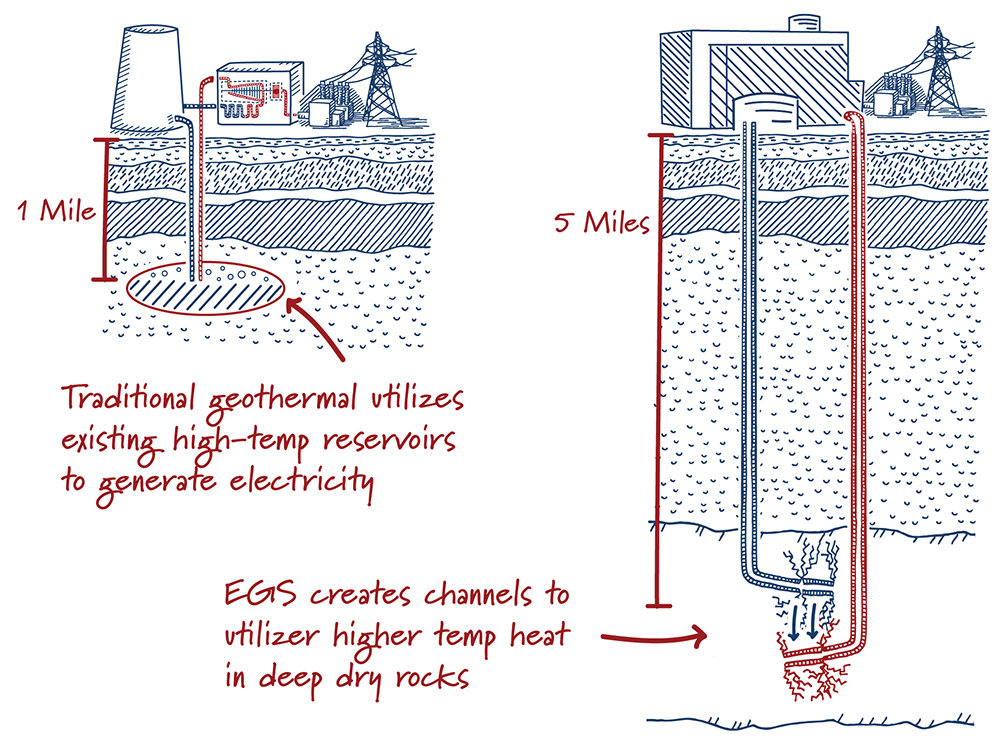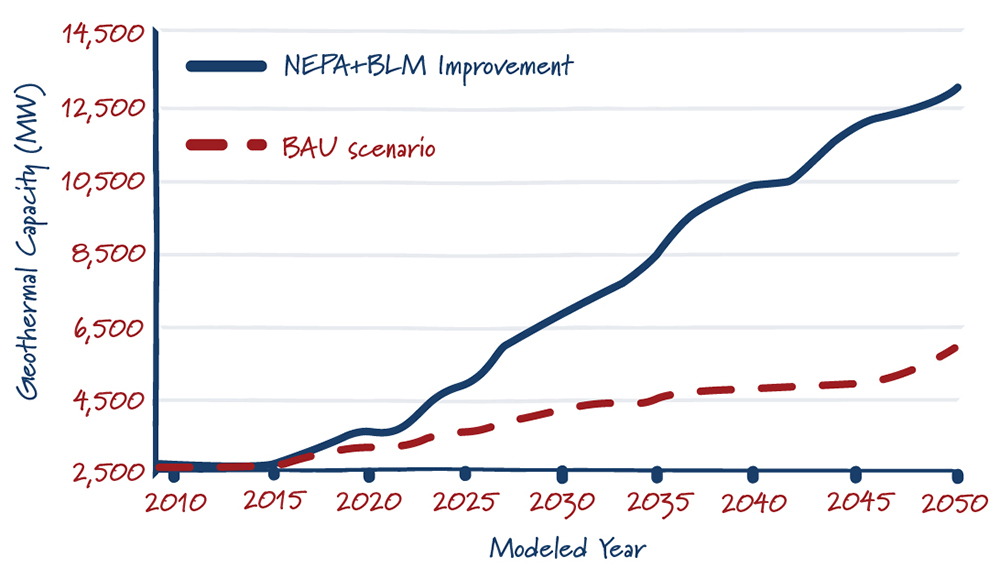
With additional R&D and regulatory reform, geothermal has the potential to make up a much larger supply of the U.S. energy mix. The advent of hydraulic fracturing has created positive spillover effects in the geothermal industry. With advanced sensing technologies and horizontal drilling techniques, advanced geothermal systems at depths of up to 5 miles underground are now within reach. At deeper depths and higher temperatures, geothermal can be deployed anywhere in the country. The Department of Energy estimates up to 100 GW of economically viable advanced geothermal by 20503, which is enough to provide 20% of total U.S. electricity.

Oil and gas development on public lands does not face the same development challenges as geothermal because a variety of Department of the Interior Categorical Exclusions (CX) to NEPA were passed as part of the Energy Policy Act of 20054. Furthermore, oil and gas (as well as solar and wind) have their own central permitting office at BLM that is well-versed in expediting requests for energy development.
NREL estimates that a combination of expanding CXs for geothermal exploration and centralized federal and state permitting would ultimately cut the total development timeline for geothermal in half and allow an additional 7 GW of development by 2050, a 116% increase over business as usual in 2050.5 Future developments in enhanced geothermal technology could accelerate that figure even further.

